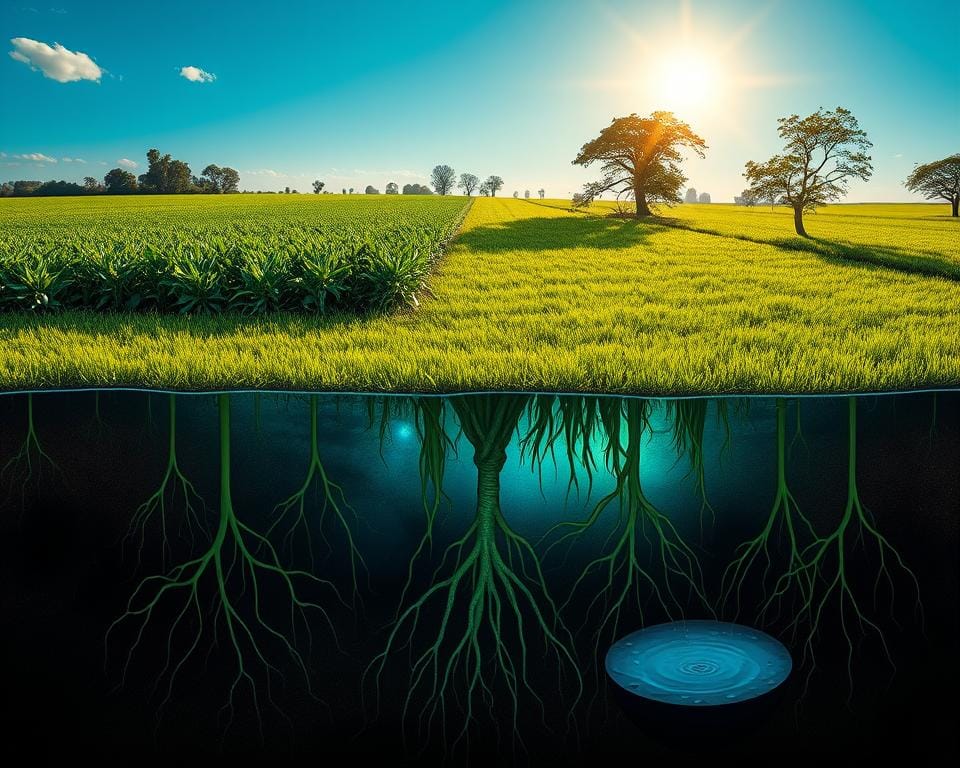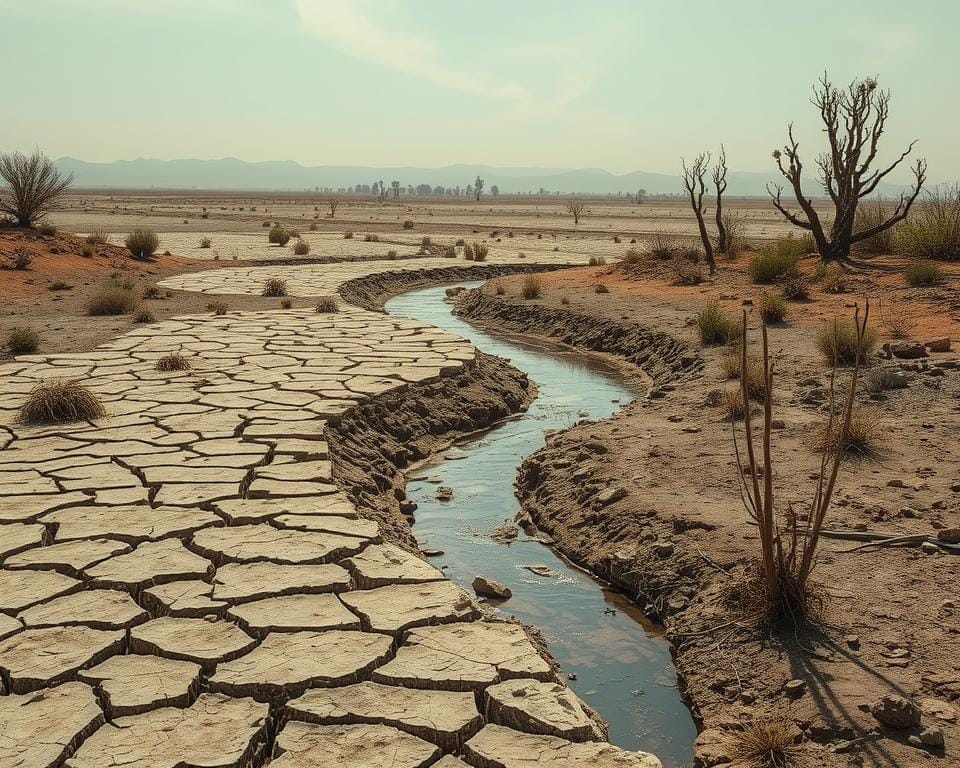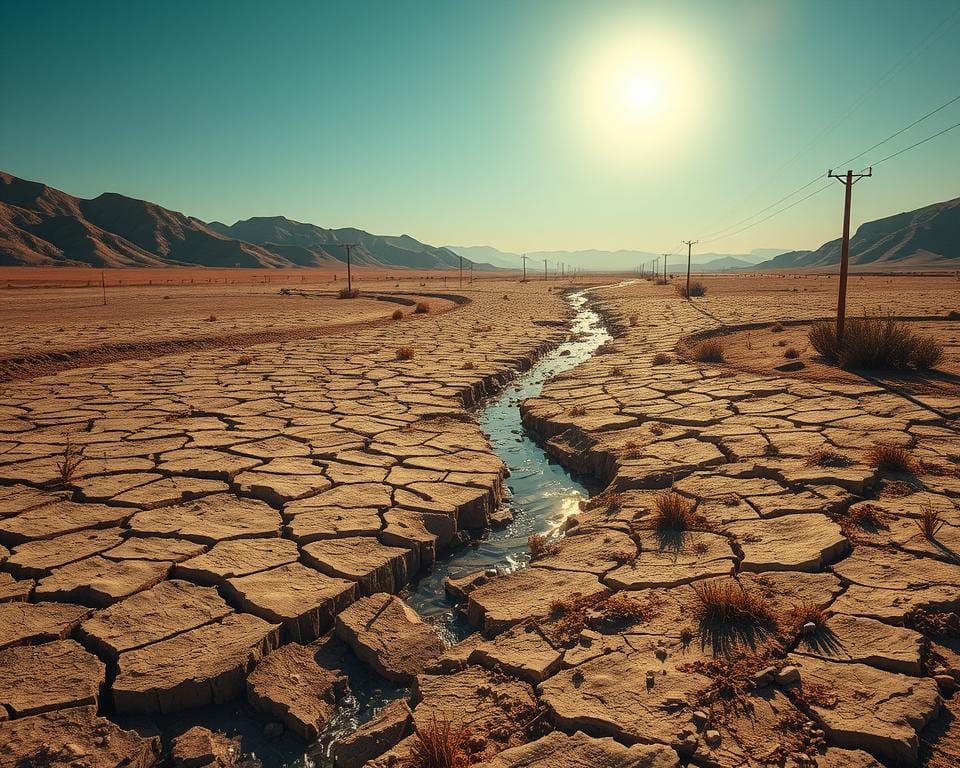Groundwater depletion is a major issue around the world. It leads to a lack of water and overuse of water stores under the earth. Reports from the United Nations show that groundwater is 30% of the world’s fresh water. Yet, it’s running low quickly. Major water sources underground are emptying faster than they can fill up. More than 2 billion people rely on groundwater, which shows we must manage water better.
In the past, it took a very long time for groundwater to build up. Now, about 70% of it is used mainly for farming. This heavy use is putting our water at risk. The High Plains aquifer in the U.S. helps produce over $35 billion in crops. But, bad practices are a threat to this water source. Policies too often support use over saving water. This issue is not just in the U.S. India, for example, uses more groundwater than any other country. Some areas there are using water way too fast, risking future supplies.
Overusing aquifers hurts our food supply, ecosystems, and the future. There’s a big need for better water use and saving plans. We have to solve this problem to keep our water safe and sustainable for years to come.
Understanding Groundwater and Its Importance
Groundwater is a crucial part of Earth’s freshwater, found in underground aquifers. It makes up about 30% of the world’s freshwater. This resource supports drinking water and farming needs. Groundwater keeps water available even when rivers and lakes are low, helping to ensure water security and everyday needs.
What is Groundwater?
Groundwater fills the gaps in soil and rock layers, known as aquifers. It’s mostly refilled by rain and surface water. In wet or cold seasons, these layers get replenished. Scientists say there’s a huge amount, about 5.97 quintillion gallons, of groundwater near Earth’s surface. The most common types are found in areas like river valleys and coastal plains.
Significance of Groundwater in Daily Life
Groundwater is key to human life and farming. It supplies nearly half of the world’s water for homes, giving us fresh, clean water. For countries with lots of farming, like the USA and India, it’s essential for growing crops. In Dhaka, Bangladesh, most city water comes from groundwater. But heavy use is causing Dhaka to sink annually. This raises concerns about groundwater use.

Global Reliance on Groundwater
The whole world depends on groundwater for farming and drinking. It helps grow a fifth of our food. In places like California and Missouri, it’s vital for crops and water supply. But taking too much groundwater can cause problems. Globally, 235 water areas are running out this century. Nine percent are almost empty. By mid-century, many places might face high costs for groundwater. This could increase food prices and affect farming.
Initiatives like managed aquifer recharge (MAR) are helping areas like Bangladesh tackle water shortages. These efforts show how we can respond to the challenge of keeping our groundwater supplies safe.
Factors Contributing to Groundwater Depletion
Groundwater depletion comes from many sources, mostly human actions. Nearly two billion people rely on groundwater. Knowing why it’s running out is key to solving the problem. We’ll look at the main reasons.
Overextraction in Agriculture
About 70% of the world’s groundwater is used by farms. Places like India and California take too much from aquifers, harming them. Crops often use more water than these sources can replace.
Since the 1970s, better drilling and pumps have led to more water being taken for farming. New methods and drip irrigation could help save water.
Impact of Industrial Usage
Industries also use a lot of groundwater, draining aquifers quickly. They need it for cooling, cleaning, and making products. The Ogallala Aquifer in the U.S. has suffered a lot because of this.
It’s important to use water carefully and keep track of how much we use. Click here to learn more about groundwater issues.
Urbanization and Population Growth
More people and cities mean more groundwater is needed. Cities put a lot of pressure on water sources. They change the land, making it hard for rain to refill aquifers.
Climate change makes this worse. Collecting rainwater and using clean wastewater can help cities use less fresh water. Find out more about water management in cities here.
Consequences of Groundwater Depletion
Groundwater depletion impacts ecosystems, food security, and socioeconomic stability. It is a critical issue in places like the western United States, India, Chile, Spain, and Mexico. Immediate action is necessary to address the rapid decline in groundwater levels.

Groundwater overextraction leads to land subsidence, harming infrastructure and drying up wells. This creates a big water shortage. Rural areas and agriculture feel this the most. A large study looked at 170,000 wells in over 40 countries. It found that 36% of aquifers globally saw significant declines from 2000 to 2022, dropping at least 4 inches annually.
These environmental issues threaten our food supply. The Central Valley of California is a prime example, where well use has caused groundwater to drop. Here, water levels fall about 2 to more than 4 feet each year. Water-intensive crops like rice and wheat find it hard to maintain yield levels.
However, the same study showed some improvement. About 20% of aquifers saw slower rates of decline since 2000. Meanwhile, 16% actually had rising water levels. Places like Arkansas and parts of California have seen benefits from careful water management and importing surface water.
But, the situation is worsening for 51% of the 542 aquifers looked at since 1980. There’s a big need for better groundwater management to avoid water shortages. If we don’t act, food prices could soar, risking more people facing hunger. For example, stopping the depletion might raise rice and wheat prices by over 7%, affecting 24 million more people.
Yet, there’s hope through smarter farming and conservation efforts, like mulching and terracing. These strategies can keep food prices down. They help sustain the global food supply, reduce environmental damage, and make our food system less vulnerable.
Addressing Groundwater Depletion
Fighting groundwater loss needs both policy change and tech improvements. Using water wisely and motivating people to save are key. Also, tech like drip irrigation helps a lot. Examples like Saudi Arabia and Arizona show us how to fix this issue. We will explore strategies and success stories about sustainable groundwater use.
Policy Changes and Management Practices
Creating strong water-saving rules is a must. Countries have started to act by regulating and offering rewards for saving groundwater. For instance, Saudi Arabia stopped growing water-heavy crops at the Eastern Saq aquifer. This helped slow down groundwater loss there. Bangkok, Thailand, also raised its groundwater levels by charging for pumping and needing licenses in the early 2000s.
Technological Innovations
Tech is crucial for saving water in farming and refilling groundwater. Drip irrigation is one tech that uses water efficiently. This saves a lot of water for crops, which helps our aquifers last longer. Tucson, Arizona’s project is a good example. They used river water to fill up their underground water, improving their groundwater levels. Such efforts show how tech can tackle groundwater depletion.
Case Studies of Successful Interventions
Studying successful cases gives us important lessons. Besides Saudi Arabia and Arizona, California’s Central Valley also faces big water problems. People there have to dig deeper wells, which can be very expensive. But, by following certain policies and practices, these challenges can be reduced. Also, the High Plains aquifer in Kansas saw a big water draw from 1996 to 2005, costing the state a lot. Yet, with the right policies and aquifer recharge efforts, we can fix these depletion issues.
To give a clear picture, let’s compare some initiatives:
| Location | Strategy | Outcome |
|---|---|---|
| Saudi Arabia | Banning water-intensive crops | Reduced depletion in Eastern Saq aquifer |
| Arizona | Groundwater recharge project | Rising groundwater levels |
| Thailand | Pumping fees and licenses | Increased groundwater levels in Bangkok basin |
| California’s Central Valley | Policy implementation and new water supplies | Averting the need for deeper wells |
Dealing with groundwater loss needs a broad approach. We must mix smart water policies, new tech, and lessons from success stories. By learning from different places, we can make plans. These plans will support farms and ensure our groundwater is replenished for a secure water future.
Conclusion
Groundwater is running out and it’s a big problem that needs quick action. It’s crucial for drinking water and farming for half of the world’s people. Since 2000, the amount of groundwater has gone down in many places. In some, it’s getting worse fast, which is bad news for crops and clean water.
We need a plan that looks at the environment, farming, and people’s needs. Teaching people how to save groundwater is key. For example, new water sources and refilling underground water stores have worked. A project in El Dorado, Arkansas made groundwater levels go up by using river water.
Changing rules and new tech help manage water better. In Bangkok, higher costs for taking out groundwater led to less use and more water in the ground. In Tucson, Arizona, using Colorado River water fixed a dry aquifer. Learning from these successes can help us use groundwater wisely and keep it for the future. Even though the risk is big, there’s still hope if we work together now.

